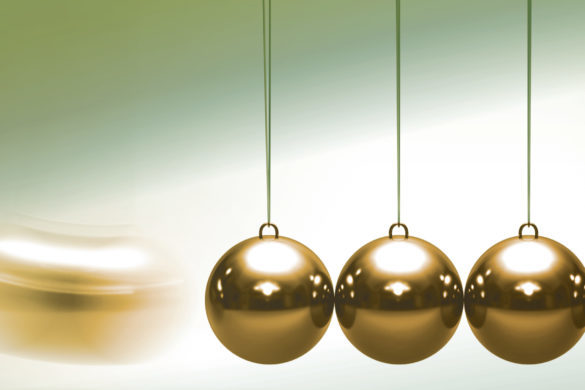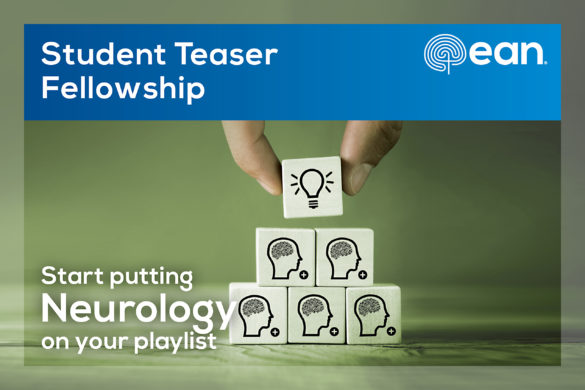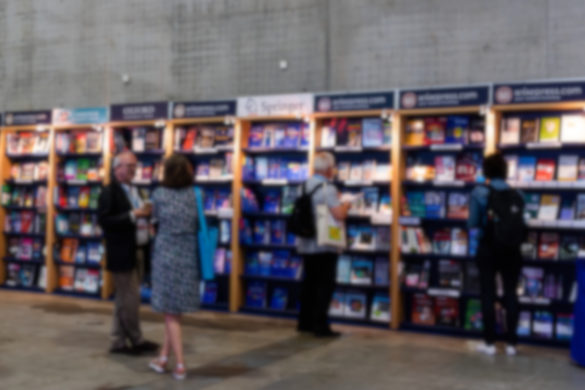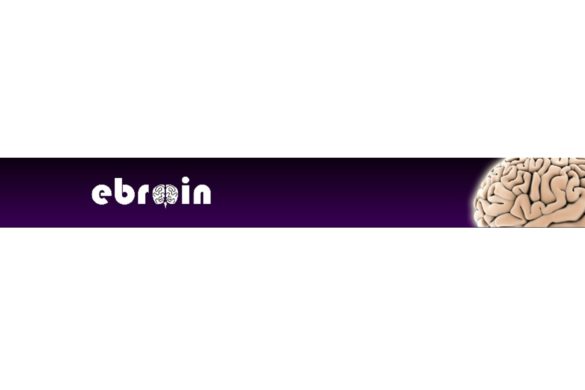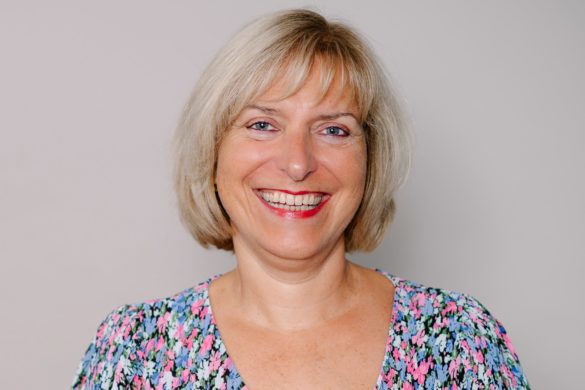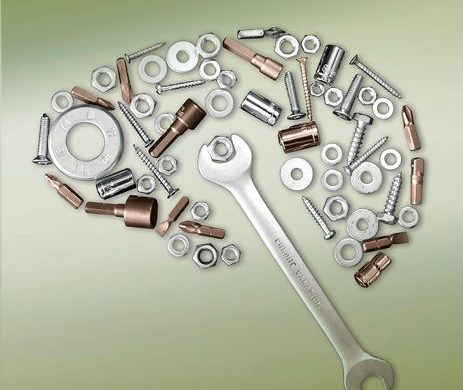Report from Nedia Ben Achour from Tunisia visiting the Department of Neuromuscular Diseases and ALS in Marseille, France under the supervision of Professor Shahram Attarian
I carried out my training in the “Department of Neuromuscular Diseases and ALS” (La Timone, Marseille) from April 1st, 2015 to June 30th, 2015. My supervisor was Professor Shahram Attarian. This department is a reference center for neuromuscular diseases and electromyography. Everyday activities in this department consist of:
- Consultation
- Electromyography
- Hospitalisation
There were 4 medical staff meetings every week:
- Multidisciplinary meeting (Monday)
- Bibliography meeting (Wednesday)
- ALS meeting (Thursday)
- Hospitalisation meeting (Friday)
There were also 2 (session) of Muscle Biopsy every week.
My training goals were:
- To improve my knowledge in the fields of neuromuscular disorders: examination, diagnosis approach, investigations, treatment, and management of patients with chronic neuromuscular diseases such as occupational, psychological evaluation, orthopaedic examination, orthotic devices and wheelchair prescriptions.
- To refine my practice in electroneuromyography.
During my training, I attended all meetings and I participated in the everyday activities actively in order to fulfil the educational purpose of my visit.
In this department, I had the opportunity to examine patients with:
- Genetic myopathies: Steinert Dystrophy, Facioscapulohumeral (FSH) myopathy, distal myopathy, metabolic myopathies (Mac Ardle glycogenosis, Pompe disease, mithochondriopathy), congenital myopathy, Limb-Girdle-Muscular Dystrophy
- Acquired myopathies: Necrotising autoimmune myopathy, Endocrinopathy related myopathy, Inclusion Body Myositis
- Genetic neuropathies: Charcot Marie Tooth neuropathy, Hereditary Neuropathy with liability to pressure palsy
- Acquired neuropathy: Multifocal motor neuropathy with conduction block, Chronic Inflammatory Demyelinating Neuropathy, Guillain Barre Syndrome, Lewis ET Sumner syndrome, Anti-MAG peripheral neuropathy
- Amyotrophic Lateral sclerosis
- Autoimmune Myasthenia and Congenital Myasthenic syndrome
During Electroneuromyography sessions, I had the possibility to practice basic techniques such as nerve conduction velocity test and electromyography. I had also the opportunity to attend some specialised techniques such as MUNIX which is a method for assessment of number and size of motor units. I had the possibility to attend a Muscle Biopsy and a Nerve Biopsy and to learn some technical procedures.
During meetings, medical charts of patients are analysed and discussed. These discussions provided me the possibility to learn diagnosis approach and actualities in management protocols of neuromuscular disorders.
In conclusion, the training in the “Department of Neuromuscular Diseases and ALS” was very beneficial to me. It has advanced my understanding of the neuromuscular disorders and improved my knowledge in diagnosis and management approach.
***************************************************
Report from Andrea Borosteanu from Romania visiting the Department of Neurology at the Medical University in Innsbruck, Austria, under the supervision of Dr Gerald Walser and Dr Michael Knoflach
My name is Andreea Borosteanu and I am a resident doctor in neurology in the Rehabilitation Hospital Cluj-Napoca, Romania. During the last six weeks, I had one of the greatest experiences of my life in Innsbruck, a fairytale town from Austria. EAN made this possible through the Department to Department Co-operation Programme and I am grateful for being one of the participants.
I would like to thank my mentors from Romania, especially Prof Dr Angelo Bulboaca who taught me all that I know, knowledge which helped me to adapt easily in a Western neurology department. I want to thank Prof Dr Werner Poewe who accepted me in the Department of Neurology, Innsbruck and to my coordinators Dr Gerald Walser and Dr Michael Knoflach, who were great mentors.
Medical and academic activity is intense at the Hospital in Innsbruck, which is the main hospital in the Tyrol region. On the one hand, this made things very interesting due to the high number and diversity of cases but on the other hand this made it difficult to find time to discuss each case in detail.
Every working day started at 8 a.m. with a report during which were presented patients admitted in the department in the last 24 hours. During this session, I liked the imagistic section and the academic one the most. Academic activity took place twice a week, where were presented clinical cases or articles from the neurological field.
In the first 3 weeks I worked in the Epilepsy Monitoring Unit under supervision of Dr Gerald Walser. Here were admitted mainly patients in which the diagnosis of epilepsy was uncertain or with drug resistant epilepsy. Every Monday, I attended the montage of the electrodes and to adjustments of the electronic equipment. On Wednesdays, I participated in the evaluation from outpatients. EEG interpretations and imagistic evaluations – MRI, PET, SPECT – of the patients with epilepsy was a regular work in which I took part.
Epileptic pathology was wide including focal and generalised epilepsy. Symptomatic epilepsy was found mostly related with meningiomas, heterotopia, dysplasia, porencephaly, schizencephaly, cavernomas or like a part of Down syndrome. Other interesting epileptogenic entities that I met were Sotos and Landau-Kleffner syndrome or Rasmussen encephalitis. I had the chance to take part in the adjustment of therapeutic plans, to vagus nervus stimulation and to the planning of intracerebral electrode implantation.
In the following 3 weeks I switched to the Neurovascular Emergencies Unit where I collaborated with PD Dr Michael Knoflach. Here I encountered a lot of complex cases, including dissection of aortic arch associated with dissection of common carotid artery, dissection of vertebral artery, post coiling cerebral aneurysm, ischemic stroke related with endocarditis, Trousseau syndrome, paradoxical embolia, cerebral amyloid angiopathy and finally cerebral venous thrombosis. I was lucky participating to protocols of thrombolysis and cerebral artery thrombectomy, angioplasty and stenting of the carotids and intracranial arteries.
My spending time in Department of Neurology, Innsbruck was short but fruitful. I am happy for participating to this programme. In the last 6 weeks I became richer in science and spirit due to the great people that I met in Innsbruck.
***************************************************
Report from Anca Mariuca Iuoras from Romania visiting the Institute for Neurodegenerative Disorders at the University Hospital in Bordeaux, France under the supervision of Professor Wassilios Meissner
The six weeks I spent in France at the Institute for Neurodegenerative Disorders of CHU Bordeaux represanted a great opportunity for me to see at work and also learn from some great phisicians and to see many interesting cases, some of them really rare that I saw for the first time.
I had the chance to assist and also to inject botulinum toxin in patients with a great variety of pathologys (blefarospasm, generalized dystonia, hemifacial spasm, writter s cramp, torticolis). I attended the ambulatory consultation where I saw many patientes with Parkinson’s Disease, part of theme having deep brain stimulation.
I went to the Neurosurgery Department with the neurologist responsible for DBS to see how the adjustments to the neurotransmitter are made in patients recently operated for Parkinson’s Disease, and I had the chance to assist a DBS surgery.
I attended the meeting of a multidisciplinar team for diagnosis of Gille de la Tourette Syndrome, where I saw the diagnostic criteria for this disease. Another pathology that I saw there was Multisystem Atrophy given the fact that it was a National Centre for MSA. I was invited to a conference in Montpellier about Parkinson’s Disease, where I had the chance to find out the latest news about new therapies in this area. This scholarship represented a great experience, that I’m sure is going to help me to become a better doctor.
***************************************************
Report from David Kakabadze from Georgie visiting the Department of Neurology at the University of Heidelberg, Germany under the supervision of Professor Peter Ringleb
Through the EAN Department-to-department Programme I went to work in the University Clinic of Heidelberg, Germany. The programme started on the 1st of April and concluded on the 13th of May 2015. Heidelberg University Clinic is equipped with the latest technology and is the place where leading European proffesionals work. The enviroment is perfect for the personnel to perform thier duties and treat the patients.
From the perspective of my proffesional interests, I spent this period of time at a Stroke Unit. This was the department where highly qualified, multidisciplined specialists (neurologists, rehabitologs, psychologists, nurses) work, which under the management of Europes’ distinguished specialist Peter Ringleb and by implementing modern methology, were conducting the treatment and diagnosing procedures as well as the psychological and physical rehabilitation courses to patients suffering from stroke.
The department of the Stroke Unit is very well organised and structured, which gives the patients the opportunity to rapidly move from treatment of acute stage to the early rehabilitation, and significantly improves the outcome of cerebrovascular diseases.
Patients suffering from acute ischaemic stroke are treated with thrombolytic therapy at the Neurology Department of the University Clinic of Heidelberg. This methology is not implemented in Georgia yet. Considering the above mentioned, it was vital for me to spend 6 weeks and observe the managment of such patient cases. All this will give me a big hand in establishing thrombolytic therapy practice in the country of Georgia.
For a young begginer neurologists this is a great chance to gain a huge expirience. Attending and going through the practice of the EAN Department Programme is a major step forward for beginning neurologists in their professional carrier. It allows reaching higher levels, which is exactly what I experienced myself. I want to express many thanks to the EAN Department Programme board and to the University Clinic of Heidelberg.
***************************************************
Report from Mahoui Soulaimane from Algeria visiting the Institute for Neurodegenerative Disorders at the University Hospital in Bordeaux, France under the supervision of Professor Wassilios Meissner
During my training period from 15 April to 23 May in the Institute for Neurodegenerative Disorders at the University Hospital in Bordeaux, a weekly programme of activities was prepared by Pr Meissner after setting the objectives appropriate to my needs. The programme consisted of:
- Attending the activities of the inpatient department including:
- Staff of the hospital team where the various problems of inpatients are discussed.
- Examination of incoming patient.
- Visit of inpatients with Professor Tison and Professor Meissner
- Attending various outpatient consultations and follow-up:
- Parkinson’s disease and parkinsonian syndromes with: Prof Tison, Prof Meissner, Prof Burbaud, Dr Laurens, Dr Spampinato, and Dr Chrysostom.
- DBS patients and those with Apokinon pump with: Prof Guehl, Dr N.Damon Perriere.
- Multidisciplinary consultation monitoring of patients with MSA: Samier Foubert.
- Consultation of Tics and Gille de la Tourette syndrome with Prof Burbaud.
- Therapeutic education of PD patients.
- Oculomotor assessment: review and preparation of the patient by the orthoptist, progress of recording and interpretation of results with Dr Brice Laurens.
- DBS multidisciplinary meeting to discuss candidates for surgical treatment patients held on April 17.
- Botulinum toxin injection for patients presenting dystonia with Prof Burbaud and Prof Guehl.
- Finally, I was lucky to be invited by Professor Wassilios to attend Parkinson workshops that took place at the University of Montpellier in May 18, 2015 organised by the Neuroscience Society.
I was very impressed by the high quality of the framework, the organisation of the team, its availability, competence, experience and involvement in several research projects.
This experience allowed me to:
- Confirm some of my knowledge and correct others.
- Get new knowledge in the diagnostic process and management of complicated patients.
- Discover advanced research projects that bring me hope in the practice of medicine.
My thanks to:
- The EAN for allowing me to experience this.
- Prof Tison and his team for their welcome.
- Catherine Griveau for helping me to find affordable accommodation.
My last word is for Prof Wassilios Meissner, a generous man, available, of proven competence and who became a model for me – thank you.




